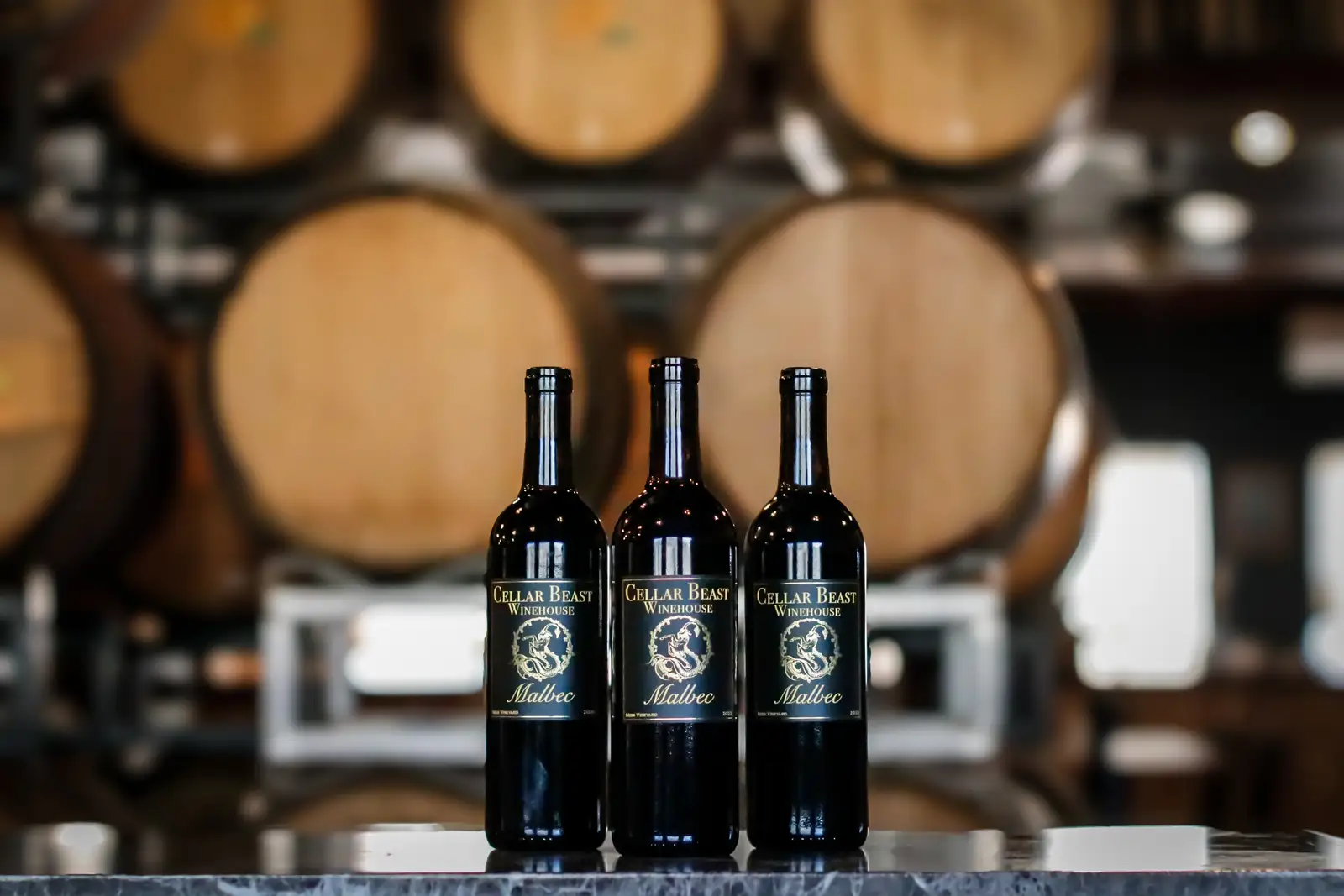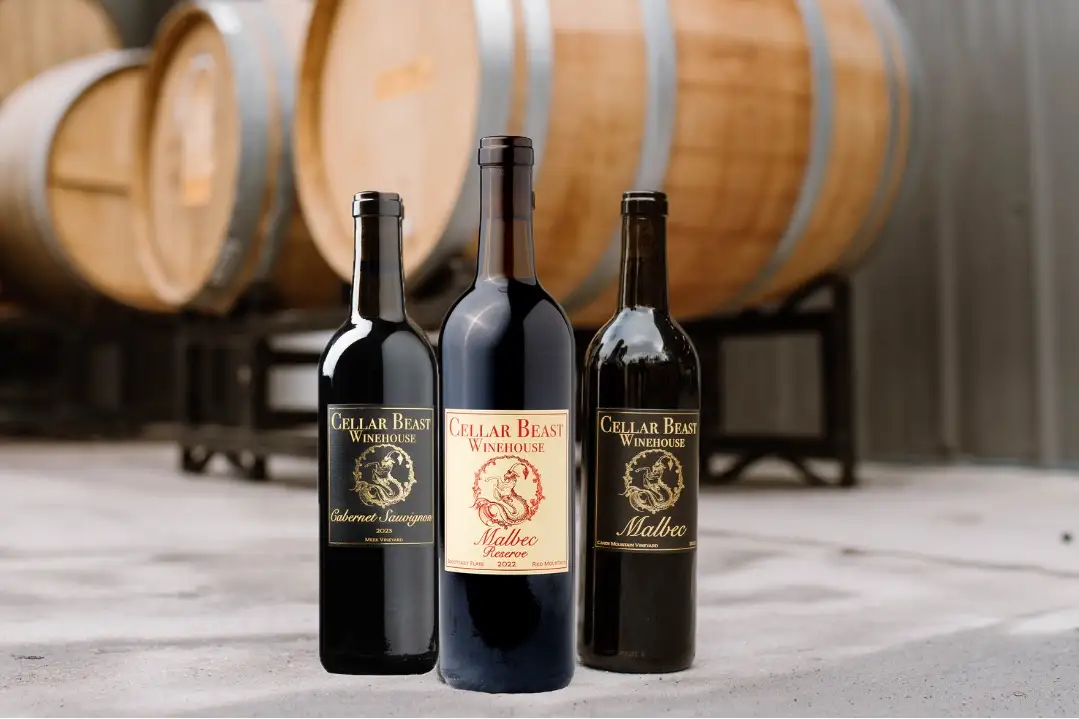Wine isn’t just about flavor; it’s about balance, both in taste and lifestyle. At Cellar Beast Winehouse, I often meet guests who love a rich Cabernet or a crisp Chardonnay. They quietly wonder how many calories are in their glass of wine. That’s a smart question, and one worth answering thoughtfully.
Knowing about wine calories helps you make smart choices. You can enjoy good quality without giving up pleasure. You might entertain guests, plan a quiet dinner, or join one of our guided tastings. Knowing what affects the calorie count, like alcohol and sweetness, helps you drink confidently. In this post, I will explain how calories differ in red, white, rosé, and sparkling wines. I will also show some of our lighter picks. These wines have good flavor but are not heavy.
At Cellar Beast, every bottle contains only the residual sugar left at the end of fermentation—no added sugar to inflate the count. That sets us apart from many Pennsylvania wineries whose wines tend toward the sweeter side. From my experiences blending and tasting side by side, I can tell you that a well-made dry wine can be both satisfying and calorie-conscious. You can also listen to this guide as a podcast, just hit play below.
Key Factors Determining Wine Calories
Here’s a quick breakdown of the three most significant factors that govern wine calories:
- Alcohol Content (ABV): This is the primary driver of calories. More alcohol = more energy per sip.
- Residual Sugar: Sweet wines retain more sugar after fermentation, which adds calories.
- Serving Size: The standard 5 oz (≈ approximately 147 ml) pour provides a valuable baseline for comparison.
The US Department of Agriculture says a dry wine with about 13.5% alcohol has around 125 calories in a 5-ounce glass. Because we leave only the naturally occurring residual sugar in our wines, our reds and whites tend to fall on the lower end of that range.
Style and winemaking choices affect the wine. For example, extended skin contact or aging in heavy oak can add body and weight. These changes do not always add sugar. But those influences are minor compared with alcohol and sweetness.
Calories by Wine Type
These are averages—any given bottle may be a bit above or below. But the takeaway is clear: dry, modest‑alcohol styles tend to be your best bets if you’re watching calories without giving up enjoyment.
Comparing Red vs. White Wine Calories
You may have heard that white wine is always lower in calories than red—but that’s a simplification. In practice:
- Red wines often trend slightly higher, as they frequently carry more alcohol and have a fuller body.
- A rich Chardonnay (think buttery, high-alcohol) can overlap in calories with a medium-bodied Merlot.
- Rosé often lands in between, making it a smart “middle ground” choice.
At our guided tastings, I like to pair a Cabernet with a crisp Pinot Gris and a rosé, so guests can see—and taste—how structure and alcohol impact perception. It’s fun to lean into curiosity rather than restriction. Learn about Cellar Beast's Wine Varietals and Regions here.
How Many Calories in a Bottle of Wine?
A standard 750 ml (25.4 oz) bottle yields approximately five 5 oz pours. The Mayo Clinic says alcohol and sugar content affect the calories in alcoholic drinks. This includes wine. That translates roughly to:
- Dry white wine: ~600 calories per bottle
- Dry red wine: ~625 calories per bottle
- Sweet or fortified wines: 700–1,000+ calories per bottle
Of course, your pour size or your mood may differ—and moderation matters more than the math. A glass of beautifully crafted wine, enjoyed thoughtfully, is worth far more than any calorie count.
Low‑Calorie Wine Choices That Still Taste Exceptional
If you’re seeking lower-cal options without compromising on flavor, here’s how I lean (and what I often recommend to guests):
- Stick to dry wines with alcohol levels in the 11%–13% ABV range to keep calories in check. According to the National Institutes of Health, alcohol content is the primary factor influencing wine’s calorie count—each 1% increase in ABV can add approximately 15–20 extra calories per 5-oz serving, regardless of sugar content.
- Watch for wines with minimal residual sugar (i.e., “dry” or “bone dry”)
- Prioritize freshness, acidity, and lighter styles
At Cellar Beast, some favorites include:
- Sangiovese (from Pontin del Roza Vineyard, ~13.5 % ABV): Balanced, elegant, with cherry and savory spice tones
- Columbia Valley Rosé: Bright, refreshing, and lighter than many reds
- Our Limited‑Release Chardonnay: Crisp, mineral-driven, and designed to be lean rather than oaky
Each of our bottles features detailed tasting notes and ABV information, allowing you to choose with confidence.
→ Shop Cellar Beast Wines
Because our wines contain only the residual sugar left after fermentation, they’re generally leaner in calories than many Pennsylvania-crafted sweet wines, which tend to retain or add more sugar. The National Institutes of Health states that the alcohol content and residual sugar affect a wine's calorie count. Sweeter wines have 150 to over 200 calories per 5 ounces. Dry wines typically contain around 120 to 130 calories per 5 ounces. This difference matters when considering flavor and calorie choices.
Pairing Mindful Enjoyment with Real Wine Experience
Wine isn’t just about numbers—it’s about moments. At Cellar Beast, we believe in guided tastings that help you explore flavor, structure, and yes—what’s in your glass, calorie-wise. Our sommeliers love walking guests through a side-by-side comparison of styles and answering questions like, “Does that taste heavier or just fuller?” or “Could this pair with grilled salmon or a vegetable-forward entrée?”
When I lead those tastings, I often suggest lighter food pairings, such as roasted vegetables, grilled seafood, lean poultry, or fresh Mediterranean plates. The wine stays in focus, and the food supports rather than competes.
→ Book a Guided Tasting at our Winehouse in Andreas, PA to explore this side-by-side experience.
Buying Wine Online from Cellar Beast Winehouse
We make it easy to browse and shop from our curated cellar:
- Every bottle page includes ABV, tasting notes, and recommended pairings (so you can eyeball calorie potential).
- Secure checkout and state-by-state shipping ensure a smooth experience (see our Shipping Policy for details).
- Our limited-lot and small-batch wines are often only available through the online shop.
→ Explore our current releases and limited lots today
Because we price and market for wine lovers—not mass-market bulk buyers—we’re able to focus on craftsmanship, quality, and transparency. Every bottle we sell has detailed information about its alcohol content. It also shows the residual sugar and style. These factors affect the calorie content and your enjoyment of the wine. We price and market for wine lovers, not bulk buyers. This lets us focus on craftsmanship, quality, and transparency. Our goal is to help you choose confidently, knowing that what you see on the label is precisely what you’ll experience in the glass. When you shop with Cellar Beast, you’re not just buying wine—you’re investing in something carefully grown, thoughtfully made, and transparently shared.
Balancing Wine Calories With Enjoyment
Yes—calories matter. But not more than flavor, experience, or connection. At Cellar Beast Winehouse, we want you to enjoy wine thoughtfully. Select styles that align with your wellness objectives. Pair them with foods that enhance the wine. Enjoy them during essential moments.
You can enjoy our wines at your home table or in our guided tastings. We invite you to shop our wines online. You can also book a tasting to learn what makes a wine elegant and mindful.
→ Shop Our Wines Online
→ Book a Guided Tasting
About the Author
Kim McCullough
Co-Founder & Owner, Cellar Beast Winehouse
As co-founder of Cellar Beast Winehouse, I bring a background in hospitality, wine education, and strategic curation. I am a certified Level Two Sommelier from the Wine School of Philadelphia. I help source grapes, guide fermentation decisions, blend wines, and create tasting experiences. These experiences educate and delight.
My philosophy is simple. Wine should be easy to enjoy and meaningful. It should not be scary. That means transparency—about what’s in the bottle, what you’re pouring, and how it pairs with your life. I lead many of our tasting room programs. I enjoy comparing different styles with guests. This helps show subtle differences in structure, acidity, and calorie potential.
I live in the Lehigh Valley, PA, with my family. Every weekend, I look forward to opening a bottle. Sometimes it is lean, sometimes lush, but always intentional.




